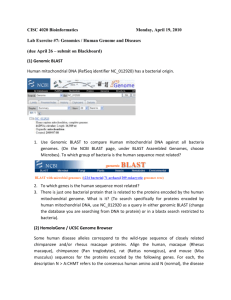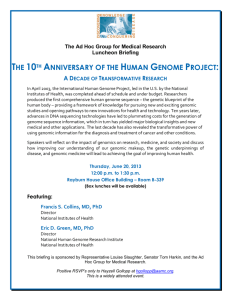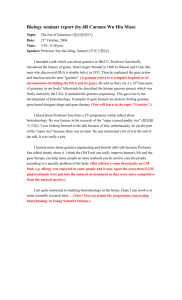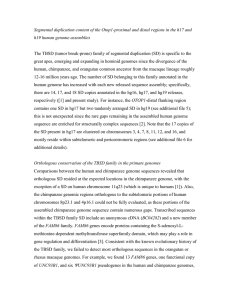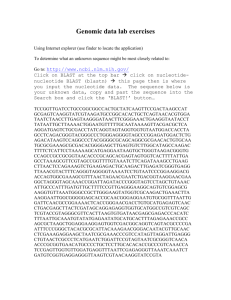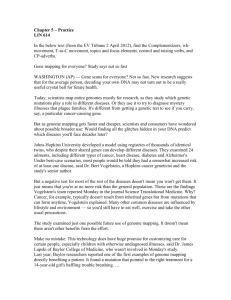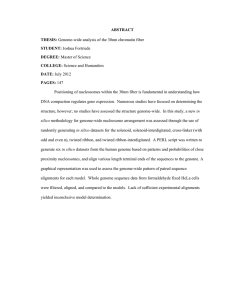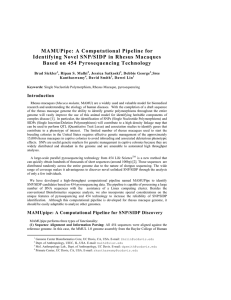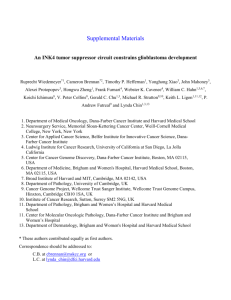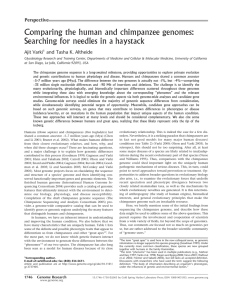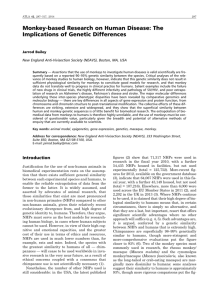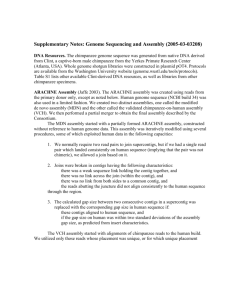What are 3 major limitations of using the chimpanzee genome for
advertisement
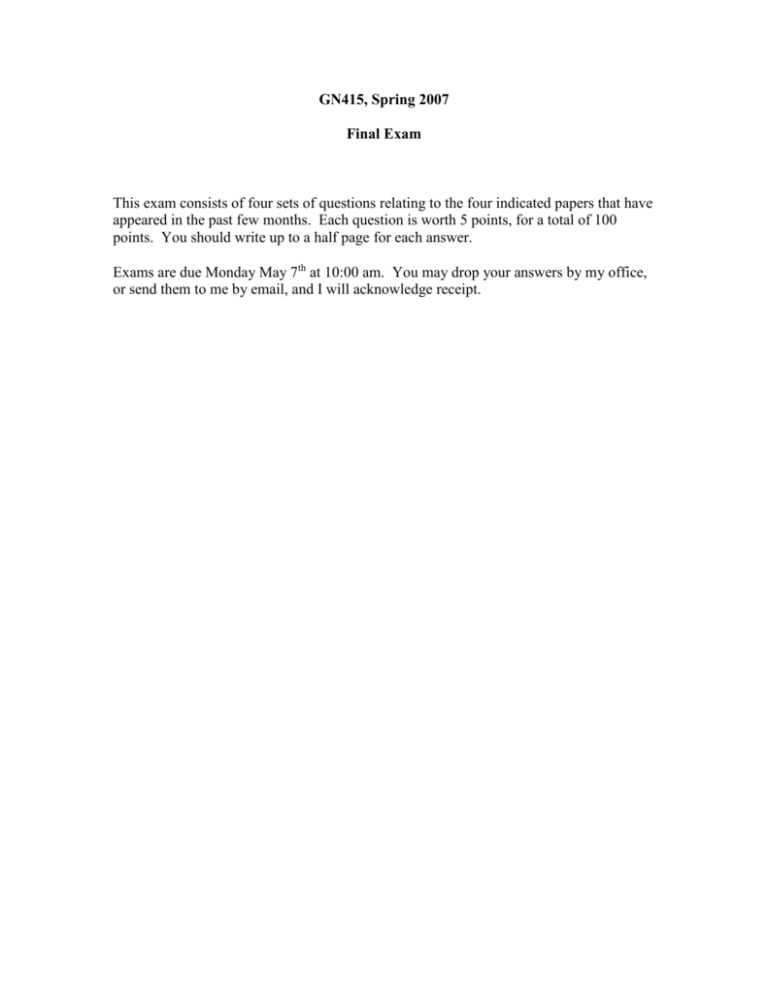
GN415, Spring 2007 Final Exam This exam consists of four sets of questions relating to the four indicated papers that have appeared in the past few months. Each question is worth 5 points, for a total of 100 points. You should write up to a half page for each answer. Exams are due Monday May 7th at 10:00 am. You may drop your answers by my office, or send them to me by email, and I will acknowledge receipt. Paper 1. C. Timmann, et al. (2007) Genome-Wide Linkage Analysis of Malaria Infection Intensity and Mild Disease PLoS Genetics 3: e48 Describe the major symptoms of malaria, and how infection and disease were quantified in this study. How many linkage peaks did they identify, where in the genome are they located, and what do they influence? Were there any negative results worth mentioning? What are innate and adaptive immunity and how might these be affected by age? This was a linkage study. Explain in half a page how a genome-wide association scan would be different. Paper 2. Rhesus Macaque Genome Sequencing and Analysis Consortium (2007) Evolutionary and biomedical insights from the Rhesus Macaque genome Science 316: 222-234 What are 3 major limitations of using the chimpanzee genome for comparison with the human? How was the human genome sequenced used to aid in the assembly and annotation of the macaque genome? Describe the filters that were used to assign orthologs to over 10,000 of the 21,000 known human genes. 229 instances (out of 64,251 tests) were observed in which the wild-type macaque allele is the same as a known human disease risk allele. How can this be explained? Comment in no more than a half page on the final paragraph of the paper: explain why you agree or disagre. “Finally, the genomic rearrangements, duplications, gene-specific expansions, and measurements of the impact of natural selection presented here have revealed the rich and heterogeneous genomic changes that have occurred during the evolution of the human, chimpanzee, and macaque. The marked diversity of the types of change that have occurred demonstrate a major feature of primate evolution: The aggregation of changes that we see, even in closely related species, does not reflect smooth, progressive, and orderly genomic divergence. Models of abrupt or punctuated evolution already acknowledge that smooth and continuous change is difficult to achieve on an evolutionary time scale, but this study provides a notable example of the operation of this principle in our close relatives.” Paper 3. B.E. Stranger, et al (2007) Relative Impact of Nucleotide and Copy Number Variation on Gene Expression Phenotypes Science 315: 848-853 What is the rationale for surveying the impact of SNP and copy number variation on gene expression? What is a false discovery rate, and how did they use this concept to control their analysis? Summarize the findings presented in Figure 1 and Table 2. What is the evidence that recurrent mutation contributes to CNV association with expression variation? Comment in no more than a half page on what you think the significance of this study is. Paper 4. A.W. Whitehurst, et al. (2007) Synthetic lethal screen identification of chemosensitizer loci in cancer cells. Nature 446: 815-819 Why did the authors choose NCI H1155 as their cell line for this project? What are the three largest classes of gene uncovered in the primary screen, and why do these seem to be biologically plausible? What were the roles of vinorelbine and gemcitabine in their experiments? Explain the term “synthetic lethal” in the context of this paper. The authors conclude with the observation that: “An expected outcome of genomic chemosensitizer screens is the identification of gene products that are targets of currently available compounds, indicating novel combinatorial therapeutic regimens.” What is the next step for the researchers to show that their results can be useful in a clinical situation to help cure lung cancer?
